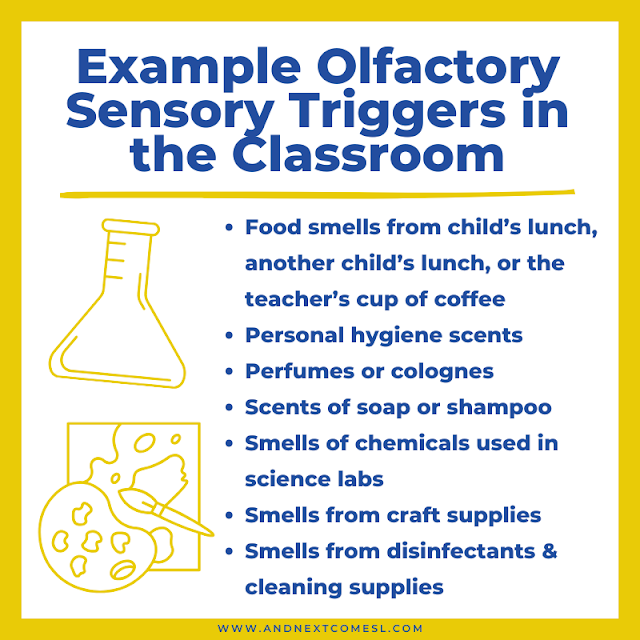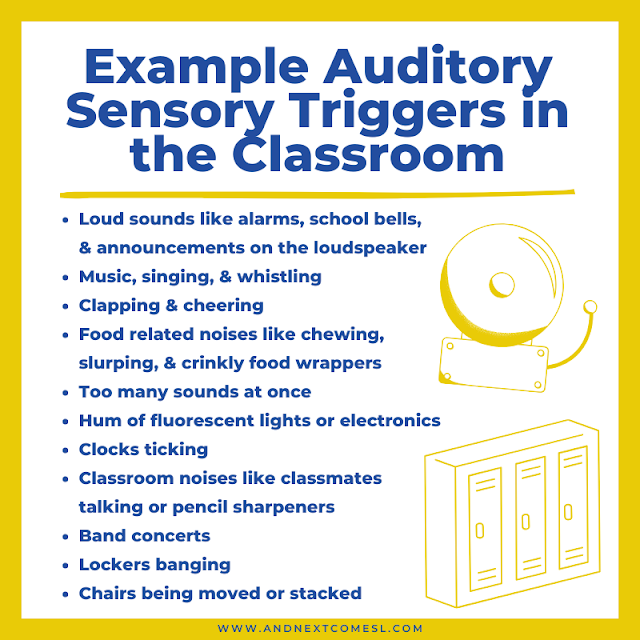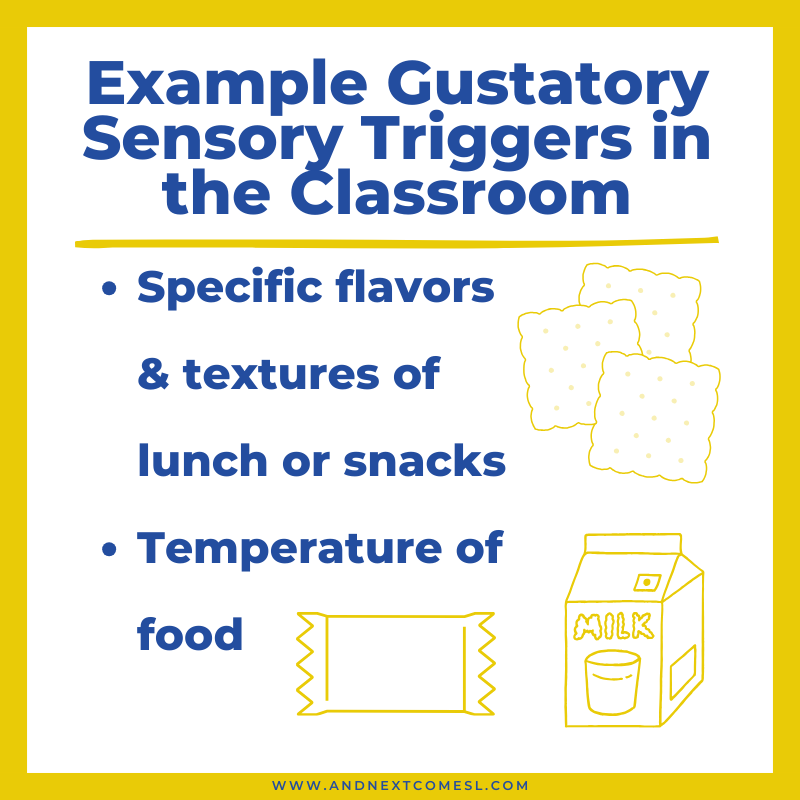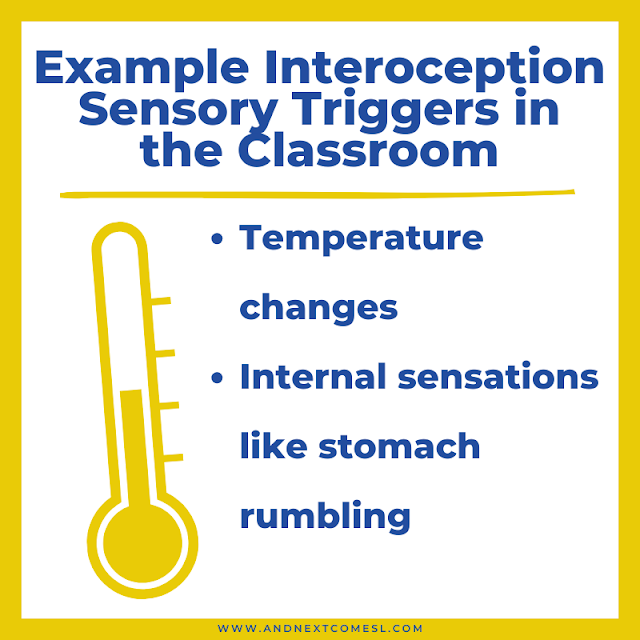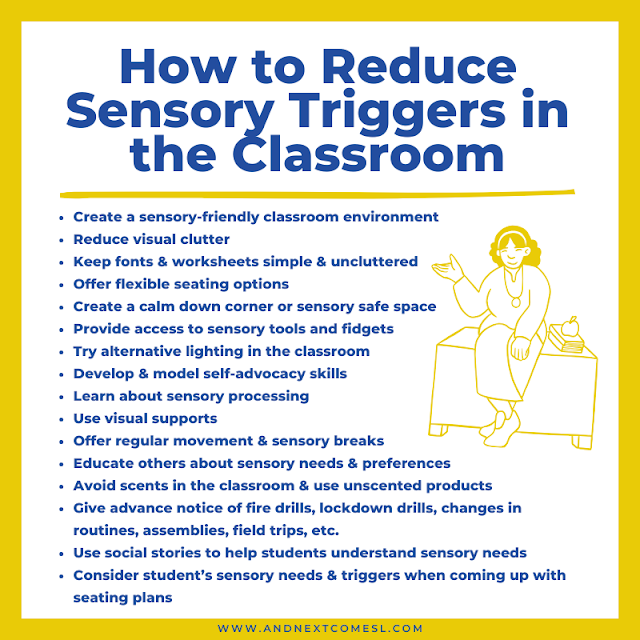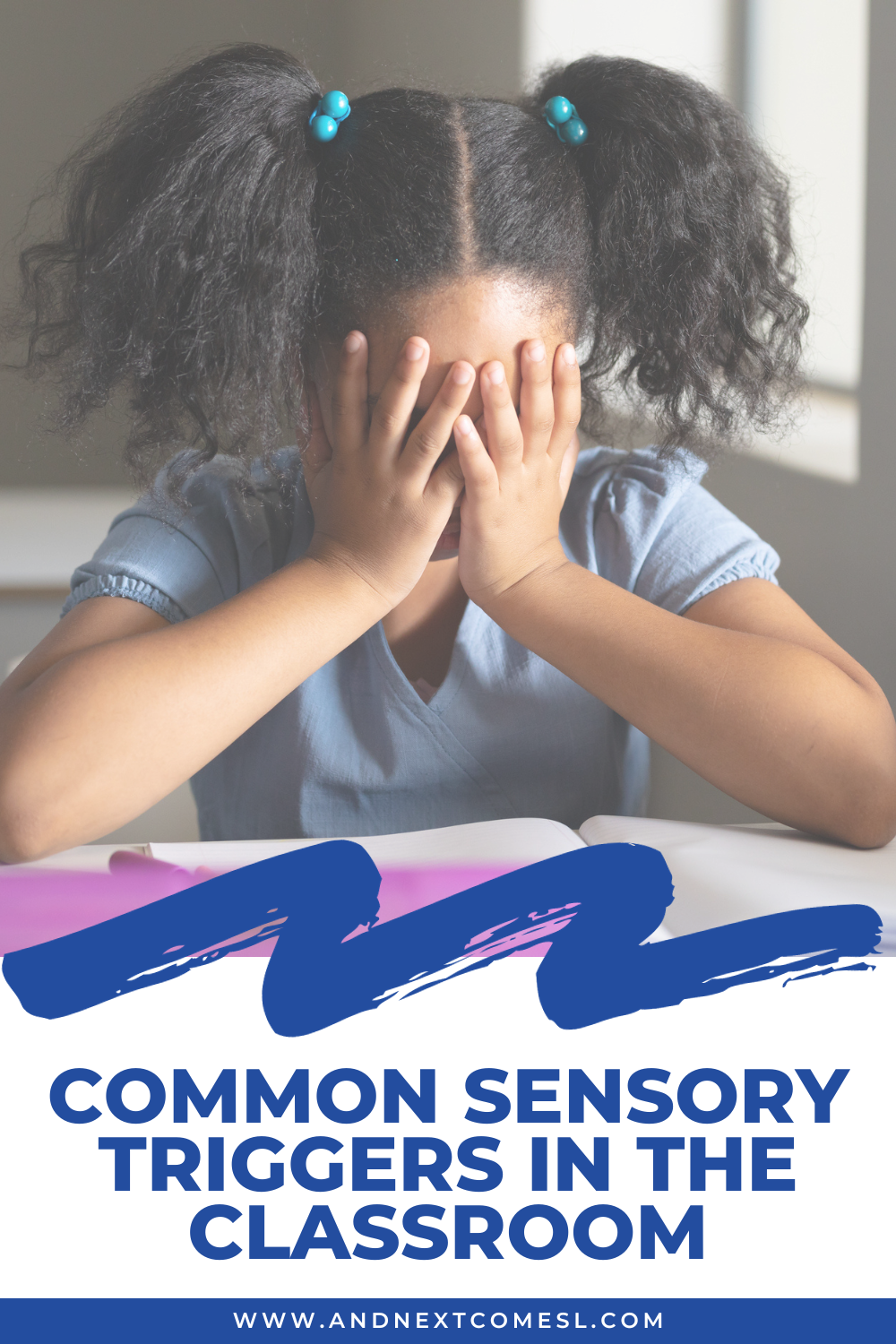It's important for parents to know their child's sensory triggers and understand sensory processing issues. But, it's also important for teachers to be familiar with these triggers as well.
After all, there are lots of things in the school that can be overwhelming to kids. So it's a great thing for teachers to be aware of if they want to adequately support their students in the classroom. (And maybe cut down on some potential disruptive sensory issues or meltdowns along the way).
Now, if you're not sure what sensory triggers are, I do recommend reading this article first. That way you have a better understanding of the basics before we dive into classroom specific triggers.
Below, we'll look at common sensory triggers in the classroom and what teachers and school staff can do to help limit or reduce those triggers. So let's take a closer look...
Common Sensory Triggers in the Classroom
Schools are busy. And loud. There's just a constant stream of sensory information all day long. Some students can get really good at masking any sensory issues and their triggers at school, which may make it trickier to spot some of the things that set them off.
And then there are others who are constantly overwhelmed and experience frequent meltdowns as a result. So, their triggers might be much easier to spot.
But, what should you watch out for? Well, here are some sensory triggers that are common in classrooms and schools:
- Visual (sight): clutter, bright or flickering lights, decorative displays, busy decor, glare from lighting or computer screens, busy carpet patterns or designs, too much natural light from windows, dark or poorly lit rooms, able to see too many things outside the window (e.g., traffic lights, people walking, cars driving by)
- Tactile (touch): feel of the school uniform, clothing tags or seams, messy or dirty hands, touching something sticky, wet or dirty clothes, unexpected touches, light touch, feel of the chair, feel or texture of the carpet or floor, feel of craft materials (e.g., chalk, glue, play dough, slime, pipe cleaners, clay, paint), students bumping each other in the hallway, juice getting on hands when inserting straw into juice boxes
- Olfactory (smell): food smells (e.g., child's lunch or another child's lunch, cooking classes, teacher's cup of coffee), personal hygiene scents (e.g., body odor, feet when shoes or socks have been removed), perfumes or colognes, scents of personal care products (e.g, soap or shampoo), smells of chemicals used in science labs, smells from craft supplies (e.g., paint, glue, rubber cement, scented markers), smells from disinfectants and cleaning supplies
- Auditory (sound): loud sounds (e.g., alarms, traffic sounds from outside, fans, hand dryers, flushing toilets, intercom/loudspeaker, school bell ringing), music, singing, whistling, clapping, cheering, food related noises (e.g., chewing, slurping, swallowing, crunching, crinkly food wrappers), too many sounds at once, hum of fluorescent lights or electronics, clocks ticking, classroom noises (e.g., classmates talking, doors creaking, pencil sharpeners, clicking of computer keyboards, listening to multiple instructions), band concerts, school bell, announcements on the intercom/loudspeaker, lockers banging, chairs being moved or stacked
- Gustatory (taste): specific flavors and textures of lunch or snacks, temperature of food
- Vestibular/proprioception (balance/body awareness): spinning, swinging, crowded or tight spaces (e.g., assemblies, lining up, riding on a school bus, hallways during recess), jumping, sitting on the floor, sitting still, sitting at a desk, climbing
- Interoception (inner body): temperature changes, internal sensations (e.g., stomach rumbling)
- Other: waiting, lining up, socializing with classmates, transitioning between activities or classes, transitioning between environments (e.g., outdoor for recess and then indoor for class time)
As you can see above, there are a wide range of possible sensory triggers in the classroom and at school. From school lunches and hectic hallways to busy classroom decor and and the onslaught of loud noises throughout the day, I bet you can now see how easily school could overwhelm some students.
How to Reduce Sensory Triggers in the Classroom
Wondering what you can do to help? Well, thankfully, there are a number of things that you can do to reduce or limit some of the most common triggers in the classroom. For instance, you can:
- Create a sensory-friendly classroom environment
- Reduce visual clutter by minimizing decorations, art, posters, word walls, carpets with busy designs or patterns, etc. in the classroom
- Keep fonts and worksheets simple and uncluttered (i.e., skip the fancy fonts and busy borders)
- Offer flexible seating options
- Create a calm down corner or sensory safe space
- Provide access to sensory tools and fidgets
- Try alternative lighting in the classroom
- Avoid scents in the classroom and opt for unscented products, such as soap or cleaning supplies, if possible
- Learn about sensory processing so you're more familiar with it
- Educate others, as well as the students, about sensory needs and preferences
- Use visual supports
- Offer regular movement and sensory breaks
- Give advance notice of fire drills, lockdown drills, changes in routines, assemblies, field trips, etc.
- Use social stories to help students understand their sensory triggers, know when to take a break, use a calming corner, etc.
- Consider students' sensory needs and triggers when coming up with seating plans (e.g., place a student far away from the intercom/loudspeaker if they're sensitive to loud noises)
- Develop and model self-advocacy skills
As you can see, there are lots of different ways to be mindful of your students' sensory triggers (or even your own as a teacher!). Take the time to identify and learn about your students' needs and preferences and then keep those in mind when setting up the classroom, coming up with seating plans, planning activities, and so forth.
Use These Social Stories to Teach Students About their Sensory Triggers & Needs
Social stories can be a great way to help support students in the classroom. Here are some useful sensory related stories to consider:
A Quick Recap of Classroom & School Sensory Triggers
Whew, I know that was a lot of info. So, let's do a quick recap of school sensory triggers and how teachers and school staff can help.
- There are lots of potential sensory triggers for each of the 8 senses. Everything from assemblies and loud sounds to craft materials and a classmates' lunch can be potential triggers.
- Teachers can create a sensory-friendly classroom environment as a way to help reduce potential triggers for students. For instance, teachers can use flexible seating, offer sensory tools, try alternative lighting, implement visual supports, and more.
- Social stories can be a great way to help support students in the classroom and teach them about their own triggers. These stories can also teach them strategies that they can use themselves.
Well, that's it. Hopefully, you found this information about sensory triggers in classroom helpful.





